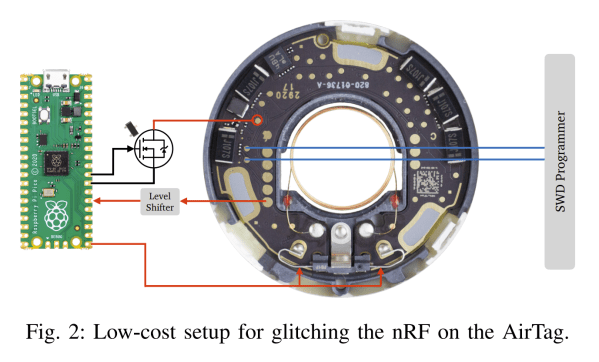In case you weren’t aware, Apple devices around you are constantly scanning for AirTags. Now, imagine you’re carrying your laptop around – no WiFi connectivity, but BLE’s on as usual, and there’s a little bit of hostile code running at user privileges, say, a third-party app. Turns out, it’d be possible to make your laptop or phone pretend to be a lost AirTag – making it and you trackable whenever an iPhone is around.
The nroottag website isn’t big on details, but the paper ought to detail more; the hack does require a bit of GPU firepower, but nothing too out of the ordinary. The specific vulnerabilities making this possible have been patched in newer iOS and MacOS versions, but it’s still possible to pull off as long as an outdated-firmware Apple device is nearby!
Of course, local code execution is often considered a game over, but it’s pretty funny that you can do this while making use of the Apple AirTag infrastructure, relatively unprivileged, and, exfiltrate location data without any data connectivity whatsoever, all as long as an iPhone is nearby. You might also be able to exflitrate other data, for what it’s worth – here’s how you can use AirTag infrastructure to track new letter arrivals in your mailbox!












